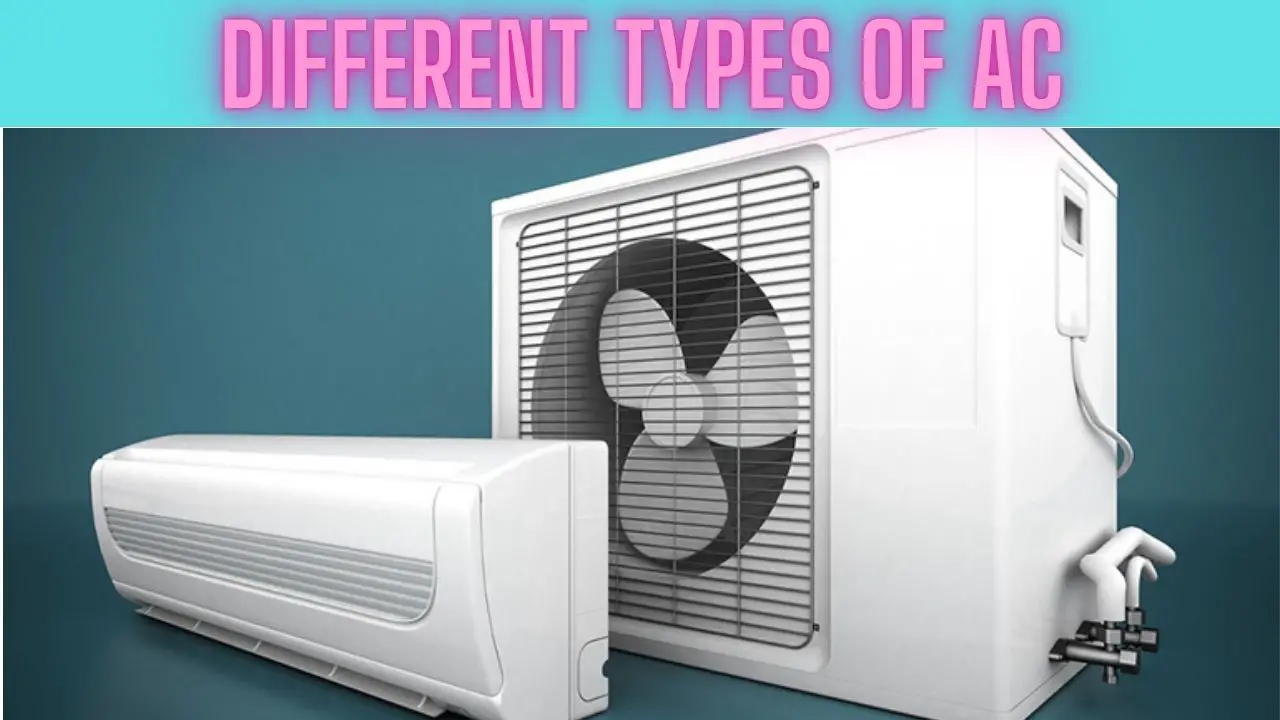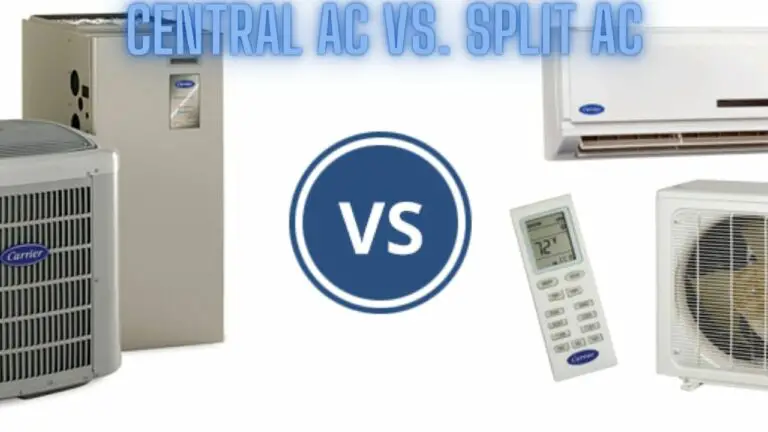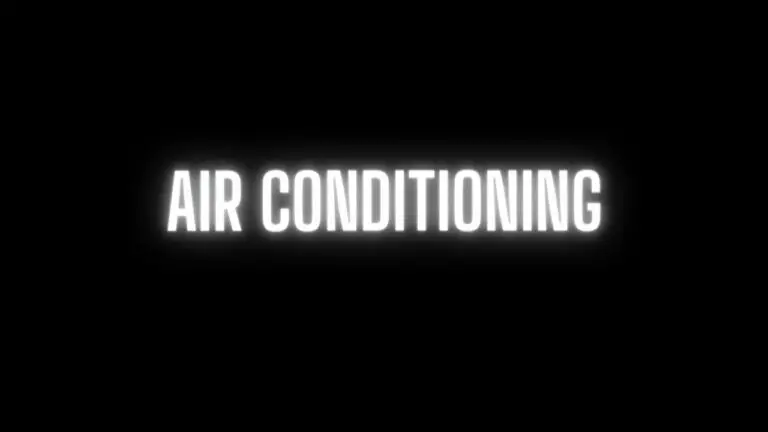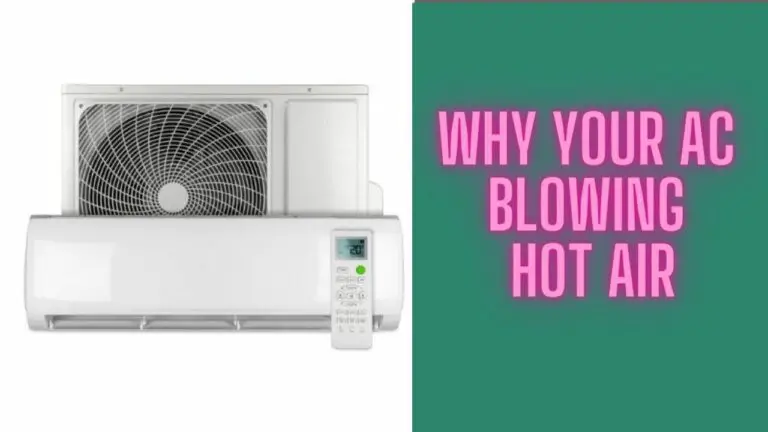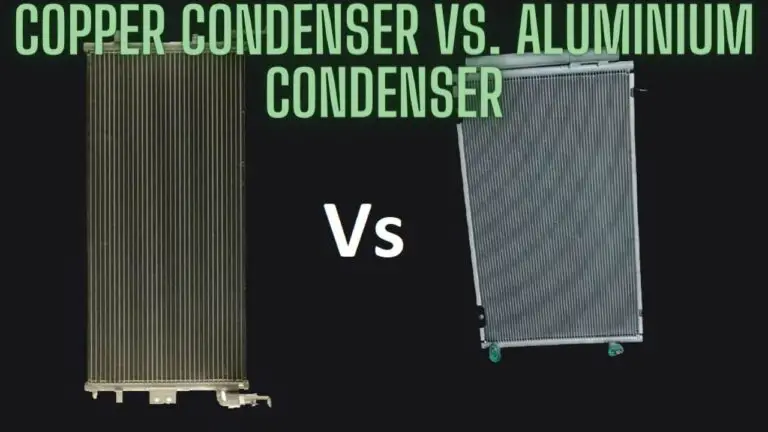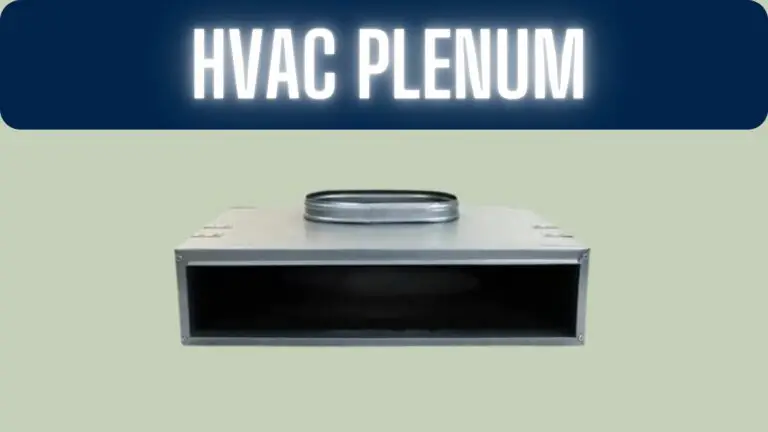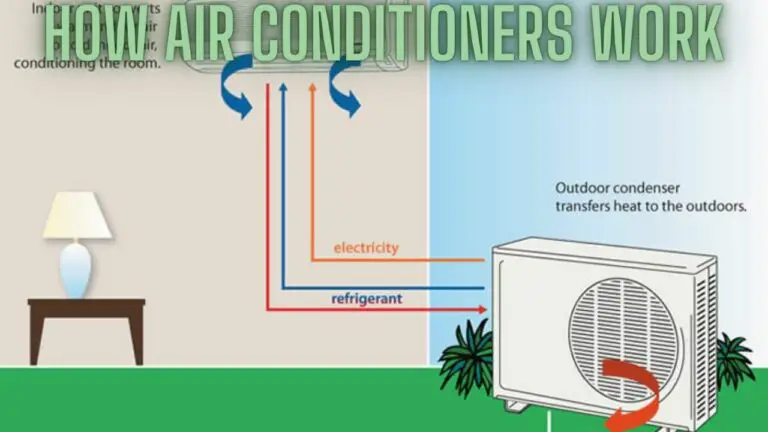Exploring the Different Types of Air Conditioners: A Comprehensive Guide
Introduction
Air conditioners have become an integral part of modern life, providing comfort and relief from scorching temperatures during hot weather. However, not all air conditioning systems are created equal. There are different types of air conditioners designed to cater to different needs, spaces, and preferences. In this guide, we’ll delve into the world of air conditioning and explore the various types available, each with its unique features, benefits, and ideal applications.
Central Air Conditioning: Cooling Comfort for Your Entire Space
Central air conditioning has revolutionized the way we stay cool during the hot summer months. Offering efficient and uniform cooling for entire homes, offices, and large spaces, central air conditioning systems have become an essential part of modern living. In this article, we’ll explore the ins and outs of central air conditioning, including how it works, its benefits, components, and considerations for installation and maintenance.
How Central Air Conditioning Works
Central air conditioning operates on a split-system principle, which involves two main components: the indoor evaporator unit and the outdoor condenser unit. Here’s how the process works:
- Cooling Process: The process begins with the compressor in the outdoor unit, which compresses and circulates refrigerant gas through the system.
- Indoor Cooling: The refrigerant enters the indoor unit, often located in the furnace or air handler, where it evaporates, absorbing heat from the indoor air. As a result, the air inside the house becomes cooler.
- Air Distribution: The now-cooled air is distributed throughout the house via a network of ducts and vents. Return ducts bring warm air back to the evaporator to be cooled again.
- Heat Disposal: The absorbed heat is released into the outdoor air through the condenser unit, where the refrigerant releases heat and returns to a liquid state.
Benefits of Central Air Conditioning
- Consistent Cooling: Central air conditioning ensures even cooling throughout your entire living space, eliminating hot spots and providing uniform comfort.
- Energy Efficiency: Modern central AC systems come with energy-efficient options, such as variable-speed compressors and programmable thermostats, helping you save on utility bills.
- Quiet Operation: The noisy compressor unit is located outside, minimizing indoor noise levels and maintaining a peaceful environment.
- Improved Air Quality: Central systems often come with air filtration and purification options that help remove dust, allergens, and pollutants, improving indoor air quality.
- Zoned Cooling: Some systems allow for zoned cooling, which means you can control the temperature independently in different areas of your home, optimizing comfort and energy usage.
Components of Central Air Conditioning
- Compressor Unit: The outdoor unit houses the compressor, condenser coil, and a fan. The compressor pressurizes the refrigerant gas, and the condenser coil releases heat.
- Evaporator Coil: The indoor unit contains the evaporator coil and an air handler or furnace. The evaporator coil cools the indoor air, and the air handler circulates the cooled air through the ductwork.
- Ductwork: Ducts are used to distribute cooled air throughout your home and return warm air to the evaporator for cooling. Properly designed and sealed ductwork is essential for efficient performance.
- Thermostat: The thermostat allows you to control the temperature settings and cooling modes of your central air conditioning system.
Installation and Maintenance Considerations
Central air conditioning installation involves careful sizing of the system, proper placement of components, and ensuring adequate ductwork. Regular maintenance, such as cleaning or replacing filters, checking refrigerant levels, and inspecting electrical connections, is crucial to ensure optimal performance and longevity.
Window Air Conditioners: Affordable Cooling Solutions for Individual Comfort
Window air conditioners have long been a go-to choice for cooling individual rooms and small spaces. These compact units are designed to fit seamlessly into a window frame, providing a cost-effective and efficient way to beat the summer heat. In this article, we’ll explore the features, benefits, installation process, maintenance tips, and considerations for choosing the right window air conditioner for your needs.
Features and Benefits
- Compact Design: Window air conditioners are designed to be compact and space-saving. They are an excellent solution for apartments, dorm rooms, small offices, or any space where a central AC system might be impractical.
- Affordability: These units are generally more affordable upfront compared to other cooling options like central air conditioning or split systems.
- Ease of Installation: Installing a window air conditioner is relatively simple. You just need a window with proper dimensions and an electrical outlet nearby. No ductwork is required.
- Targeted Cooling: Window AC units provide direct cooling to the room they are installed in, allowing you to focus on cooling the areas you spend the most time in.
- Energy Efficiency: Many modern models come with energy-saving features, such as programmable thermostats and sleep modes, helping you manage your energy consumption.
- Dehumidification: Window air conditioners often have dehumidification functions, helping to remove excess moisture from the air and improving indoor comfort.
Installation Process
Installing a window air conditioner involves a few steps:
- Select the Right Window: Choose a window that is suitable for installation. Typically, this is a window that can accommodate the unit’s dimensions and provide proper support.
- Prepare the Area: Clear the area around the window and ensure there’s easy access for installation.
- Mount the Bracket: Some units come with installation brackets or kits. Attach the bracket securely to the window frame.
- Insert the Unit: Carefully slide the air conditioner into the bracket and secure it according to the manufacturer’s instructions.
- Seal and Insulate: Properly seal any gaps around the unit to prevent hot air from entering and cool air from escaping. Insulation materials are often included in installation kits.
- Plug In and Test: Plug in the unit to an appropriate electrical outlet and turn it on to ensure it’s working correctly.
Maintenance Tips
To ensure optimal performance and longevity of your window air conditioner, follow these maintenance tips:
- Regular Cleaning: Clean or replace the air filter every one to three months, as dirty filters can reduce efficiency and air quality.
- Cleaning the Unit: Clean the evaporator and condenser coils, fan blades, and other components annually to prevent dust buildup.
- Keep the Area Clear: Maintain clear space around the unit both indoors and outdoors to allow proper airflow.
- Check for Leaks: Ensure there are no water leaks or condensation buildup around the unit.
- Winter Storage: If you remove the unit during colder months, store it in a dry place to prevent damage.
Considerations for Choosing a Window Air Conditioner
- Cooling Capacity: Choose a unit with appropriate cooling capacity for the room size. The cooling capacity is measured in British Thermal Units (BTUs).
- Energy Efficiency: Look for units with an Energy Star label, indicating higher efficiency and potential energy savings.
- Noise Level: Consider the noise level of the unit, especially if you plan to use it in a bedroom or quiet space.
- Features: Decide on desired features such as digital controls, programmable timers, remote control, and sleep modes.
- Window Compatibility: Ensure that the dimensions of the window and the air conditioner unit are compatible.
Split Air Conditioners: Efficient Cooling with Modern Elegance
Split air conditioners have gained popularity as versatile and efficient cooling solutions for both residential and commercial spaces. Unlike traditional window units, split air conditioners consist of two main components, offering quieter operation, zoned cooling, and an aesthetic appeal that blends seamlessly with modern interiors. In this article, we will delve into the features, benefits, working principle, installation process, and maintenance considerations of split air conditioners.
Features and Benefits
- Zoned Cooling: One of the standout features of split air conditioners is the ability to provide zoned cooling. This means you can control the temperature in different rooms or zones independently, optimizing comfort and energy efficiency.
- Quiet Operation: Split AC systems are known for their whisper-quiet operation. The noisy compressor unit is located outside, ensuring minimal indoor noise disturbance.
- Sleek Design: The indoor unit, often mounted high on the wall, features a sleek and unobtrusive design that complements modern interior aesthetics.
- Energy Efficiency: Many split systems come equipped with inverter technology, which adjusts the compressor’s speed to maintain a consistent temperature, resulting in energy savings.
- Heating Capability: Some split air conditioners offer both cooling and heating functions, making them a year-round solution for temperature control.
- Improved Air Quality: Advanced filtration systems in split AC units help remove allergens, dust, and pollutants, contributing to better indoor air quality.
Working Principle
Split air conditioners consist of two units:
- Indoor Unit: This unit contains the evaporator coil, air handler, and often the remote control interface. It is responsible for cooling the indoor air.
- Outdoor Unit: The outdoor unit houses the compressor, condenser coil, and a fan. It releases the heat absorbed indoors and dissipates it into the outdoor air.
The cooling process involves the refrigerant gas circulating between the indoor and outdoor units. The gas absorbs heat indoors, cooling the air, and releases the heat outdoors, maintaining a comfortable indoor temperature.
Installation Process
Installing a split air conditioner requires a few steps:
- Choosing Indoor and Outdoor Locations: Select suitable locations for the indoor and outdoor units. The indoor unit should be installed at a higher position on an exterior-facing wall, while the outdoor unit should have ample clearance for proper airflow.
- Mounting the Indoor Unit: Install the indoor unit according to the manufacturer’s instructions. It typically requires drilling holes for the unit and connecting the refrigerant lines, drainage, and electrical wires.
- Installing the Outdoor Unit: Position the outdoor unit on a stable surface and connect the refrigerant lines, power supply, and drainage lines.
- Test and Inspection: Once installed, the system should be thoroughly tested to ensure proper cooling and heating functionality.
Maintenance Considerations
Proper maintenance ensures optimal performance and longevity:
- Clean the Filters: Regularly clean or replace the filters to maintain efficient airflow and air quality.
- Clean the Coils: Periodically clean the evaporator and condenser coils to prevent dust buildup.
- Check for Leaks: Inspect refrigerant lines for leaks and address any issues promptly.
- Professional Servicing: Schedule annual professional maintenance to ensure the system is operating at its best.
Ductless Mini-Split Systems: Efficient and Flexible Cooling Solutions
Ductless mini-split systems have revolutionized the way we think about cooling and heating individual rooms or zones. Offering a versatile and energy-efficient alternative to traditional HVAC systems, ductless mini-splits provide precise temperature control without the need for extensive ductwork. In this article, we’ll explore the features, benefits, working mechanism, installation process, and maintenance considerations of ductless mini-split systems.
Features and Benefits
- Zoned Comfort: Ductless mini-splits excel at providing zoned comfort, allowing you to independently control the temperature in different areas of your home or building.
- Energy Efficiency: These systems are designed for efficiency, featuring inverter technology that adjusts compressor speed to match cooling needs, resulting in energy savings.
- Easy Installation: Ductless mini-split systems are relatively easy to install compared to traditional HVAC systems, making them a cost-effective option for retrofitting or adding cooling to specific areas.
- Quiet Operation: The indoor unit operates quietly, with the noisier compressor unit located outdoors, ensuring minimal disruption to indoor tranquility.
- Flexibility in Design: With various indoor unit styles and mounting options, ductless mini-splits can be seamlessly integrated into different interior designs.
- Heating Functionality: Many models offer both cooling and heating capabilities, making them suitable for year-round use.
Working Mechanism
Ductless mini-split systems consist of two main components:
- Indoor Unit: This unit is installed in the room or zone you want to cool or heat. It contains the evaporator coil and a fan. The indoor unit is connected to the outdoor unit through refrigerant lines.
- Outdoor Unit: The outdoor unit houses the compressor, condenser coil, and a fan. It releases heat absorbed indoors and dissipates it into the outdoor air.
The cooling process involves the refrigerant gas circulating between the indoor and outdoor units, absorbing heat indoors and releasing it outdoors.
Installation Process
Installing a ductless mini-split system involves these steps:
- Select Locations: Determine suitable locations for the indoor and outdoor units. Indoor units are typically mounted high on walls, while the outdoor unit should be placed on a stable surface with adequate clearance.
- Mount Indoor Unit: Install the indoor unit, which includes attaching the mounting plate, connecting refrigerant lines, drainage, and electrical wiring.
- Install Outdoor Unit: Position the outdoor unit and connect refrigerant lines, electrical connections, and drainage.
- Test and Commission: After installation, the system should be thoroughly tested to ensure proper cooling and heating functionality.
Maintenance Considerations
Regular maintenance ensures optimal performance:
- Clean Filters: Regularly clean or replace the filters to maintain efficient airflow and air quality.
- Clean Coils: Periodically clean the evaporator and condenser coils to prevent dust buildup.
- Check for Leaks: Inspect refrigerant lines for leaks and address any issues promptly.
- Professional Servicing: Schedule annual professional maintenance to keep the system operating at its best.
Portable Air Conditioners: Convenient Cooling Anywhere You Need It
Portable air conditioners have become a popular choice for cooling specific rooms, apartments, or spaces where traditional cooling solutions might not be feasible. These versatile units offer the convenience of being movable and require no permanent installation. In this article, we’ll explore the features, benefits, working principle, setup process, and maintenance considerations of portable air conditioners.
Features and Benefits
- Mobility: As the name suggests, the key advantage of portable air conditioners is their mobility. You can move them from room to room, ensuring comfort wherever you go.
- No Installation Required: Unlike window or split air conditioners, portable units require minimal installation effort. They simply need a power outlet and a window for venting hot air.
- Affordability: Portable air conditioners are often more budget-friendly than traditional cooling systems, making them a popular choice for renters or those on a tighter budget.
- Dehumidification: Many portable units come with dehumidification capabilities, helping to reduce excess moisture in the air and improve comfort.
- Supplemental Cooling: Portable air conditioners are great for providing supplemental cooling in specific areas or during extremely hot periods.
Working Principle
The working principle of portable air conditioners is similar to other air conditioning systems. They cool the air by removing heat and moisture from the room. Here’s how it works:
- Air Cooling: The unit draws in warm air from the room and passes it over evaporator coils containing a cold refrigerant. This process cools the air.
- Dehumidification: As the air cools, moisture condenses on the coils, leading to dehumidification. The moisture collects in a reservoir that needs to be emptied periodically.
- Venting Hot Air: The hot air generated during the cooling process is vented out through a flexible hose that connects to a window or vent.
- Recirculation: The cooled and dehumidified air is then released back into the room.
Setup Process
Setting up a portable air conditioner involves a few steps:
- Select a Location: Place the unit near a power outlet and a window that can accommodate the venting hose.
- Venting Hose Installation: Attach the venting hose securely to the back of the unit. Extend the hose and connect it to the provided window installation kit.
- Window Kit Installation: Insert the window installation kit into the window opening, securing it to prevent hot air from entering.
- Power On: Plug in the unit and turn it on. Set the desired temperature and cooling mode.
Maintenance Considerations
Regular maintenance ensures optimal performance:
- Clean Filters: Clean or replace the air filters every one to two weeks, depending on usage, to maintain airflow and air quality.
- Empty Reservoir: If your unit has a dehumidification feature, empty the water reservoir regularly to prevent overflow.
- Clean Coils: Periodically clean the evaporator and condenser coils to prevent dust buildup.
- Store Properly: When not in use, store the unit in a dry place to prevent mold and mildew growth.
Hybrid Air Conditioners: Versatile Comfort with Efficient Heating and Cooling
Hybrid air conditioners, also known as dual-fuel or hybrid heat pump systems, offer a unique and energy-efficient solution for both cooling and heating needs. Combining the benefits of traditional air conditioning and heating systems, hybrid air conditioners provide versatile comfort throughout the year. In this article, we’ll explore the features, advantages, working principle, installation process, and maintenance considerations of hybrid air conditioners.
Features and Advantages
- Year-Round Comfort: Hybrid air conditioners offer both cooling and heating capabilities, making them ideal for maintaining indoor comfort regardless of the season.
- Energy Efficiency: These systems utilize heat pump technology, which transfers heat rather than generating it. Heat pumps are highly efficient, providing energy savings compared to conventional heating methods.
- Hybrid Operation: In colder weather, the system can switch to an alternative heating source (e.g., a gas furnace) for improved efficiency, ensuring optimal performance in all conditions.
- Cost Savings: Hybrid systems can reduce heating costs by using the most efficient source based on outdoor temperatures and energy rates.
- Reduced Environmental Impact: By relying on electricity and a cleaner fuel source for heating, hybrid systems contribute to lower greenhouse gas emissions.
Working Principle
Hybrid air conditioners operate on the principle of heat transfer. In cooling mode, they function like traditional air conditioners, removing heat from indoor air and releasing it outdoors. In heating mode, the system reverses the process, extracting heat from the outdoor air and transferring it indoors. However, when outdoor temperatures drop significantly and become less efficient for heat extraction, the hybrid system can automatically switch to an alternative heat source, such as a gas furnace.
Installation Process
Installing a hybrid air conditioner is similar to installing a regular heat pump or air conditioning system. Here are the basic steps:
- Sizing and Selection: Determine the appropriate size and capacity of the hybrid system based on your home’s heating and cooling requirements.
- Outdoor Unit Placement: Choose a suitable location for the outdoor unit, ensuring proper clearance for airflow.
- Indoor Unit Installation: If your hybrid system includes a separate indoor unit, install it following the manufacturer’s guidelines.
- Ductwork Evaluation: If your system is ducted, ensure that your existing ductwork is in good condition or consider any necessary modifications.
- Wiring and Connection: Connect the electrical wiring and refrigerant lines between the indoor and outdoor units.
- Testing and Commissioning: After installation, the system should be tested to ensure both cooling and heating functions are working correctly.
Maintenance Considerations
Regular maintenance is essential for optimal performance:
- Filters: Clean or replace filters as recommended by the manufacturer to maintain airflow and indoor air quality.
- Coil Cleaning: Periodically clean the evaporator and condenser coils to prevent dust buildup.
- Professional Check-ups: Schedule annual professional maintenance to ensure the system’s efficiency and performance.
Different Types of Air Conditioners FAQS
What are the different types of air conditioners available?
There are several types of air conditioners available, including central air conditioners, window air conditioners, split air conditioners, ductless mini-split systems, portable air conditioners, and hybrid air conditioners.
How does a central air conditioner work?
Central air conditioners cool a whole house by distributing cooled air through ductwork and returning warm air to the cooling unit. The cooling process involves evaporating refrigerant indoors to absorb heat and then releasing that heat outdoors.
What are the benefits of using a window air conditioner?
Window air conditioners are easy to install, affordable, and suitable for cooling single rooms or small spaces. They are a good option for renters and can be removed and stored when not in use.
How do split air conditioners differ from window units?
Split air conditioners consist of separate indoor and outdoor units, connected by refrigerant lines, offering quieter operation and zoned cooling. In contrast, window air conditioners have a single unit that fits into a window frame.
What are ductless mini-split systems?
Ductless mini-split systems consist of an indoor unit and an outdoor unit, but they don’t require ductwork. They are ideal for individual room cooling, offering flexibility in installation and zoned temperature control.
Are portable air conditioners effective for cooling larger spaces?
Portable air conditioners are more suitable for cooling smaller areas or supplementing cooling in specific rooms. They are not as efficient as larger systems for cooling entire homes or larger spaces.
What is a hybrid air conditioner?
A hybrid air conditioner, also known as a dual-fuel or hybrid heat pump system, combines the efficiency of a heat pump for cooling and heating with an alternative heating source (like a gas furnace) for increased efficiency in colder temperatures.
Can I install a split air conditioner on my own?
While some DIY enthusiasts might be able to install a split air conditioner, it’s generally recommended to have a professional handle the installation due to the complexity of the refrigerant lines, electrical connections, and ensuring optimal performance.
Are ductless mini-split systems energy-efficient?
Yes, ductless mini-split systems are often considered energy-efficient due to their inverter technology, which adjusts compressor speed based on cooling needs. They also provide zoned cooling, reducing energy consumption in unoccupied areas.
Can I use a portable air conditioner without a window?
Most portable air conditioners require a window or a vent for exhaust. If a window isn’t available, you might need to create a vent through a wall or another suitable opening.
Which type of air conditioner is best for my home?
The best type of air conditioner depends on factors like the size of your space, your cooling needs, budget, and installation limitations. It’s a good idea to consult with HVAC professionals to determine the most suitable option for your specific situation.
Conclusion
Selecting the right type of air conditioner depends on factors such as the size of your space, your cooling requirements, budget, and installation limitations. Whether you’re looking to cool a single room, an entire house, or a commercial establishment, there’s an air conditioning solution designed to meet your needs. Understanding the different types of air conditioners and their features can help you make an informed decision and create a comfortable environment, no matter the weather outside.

